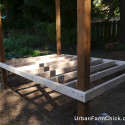General Overview and Psychometric Characteristics. Since this instrument is not meant as the sole determinant for a diagnosis, it is a reliable and valid instrument to use in observing problem behaviors in children and adolescents. Attention deficit hyperactivity disorder (ADHD) is one of the most common childhood neurodevelopmental disorders. WM\WnZKE}FYFIYW\e(U p&Y+W:Y+d"_y,,:mnu24rgqk N_o`can MF{Vf}3U2L4j=?~@v;\N]ZI5/fa4j!>J,?gbQ{O$IxwZ>vPJOFOP Psychopharmacology Bulletin Special Issue 24-84. Keep visiting Psychology Roots. Caution: These rating scales should not be used alone to obtain a diagnosis. Conner's Comprehensive Behavior Rating Scales Created in response to a growing demand for an assessment that identifies a multitude of disorders and concerns, the Conner's CBRS aids psychology professionals in obtaining a comprehensive assessment of children and adolescents via a multi-informant rating process. Nonetheless, in the latest edition, the Inattention scale was not . Interrater reliability of Teacher Rating Scales for children with attention-deficit hyperactivity disorder. The Conners 3 Teacher (Conners 3T) T-scores above 70 are usually a sign that the emotional, behavioral, or academic problems are very atypical, or more severe. 0000001994 00000 n
Quite a (Very Often. All rights reserved. The rating scales each available in long and short formare completed by teachers, parents, and adolescents. of 2. crso27 Conners' Teacher Rating Scale - Revised (L) Data Entry Sheet by C. Keith Conners, Ph.D. Student's Name/ID: Gender: MF Birthdate: School Grade: 'Teacher's Name: Today's Date: Instruction: clos ae numberof common problems that children have in schol. This category only includes cookies that ensures basic functionalities and security features of the website. ^pSNaMxE_H9# v34e/4}zJH7KDW.cBc`
02:;@ (^b40JL0&58j4daePA. \Q
fY9\I)d8pI5@(x@=~i9 v 0 G Retrieved August 12, 2008, from EBSCOHost Mental Measurements Yearbook database. We also include a case study to highlight some of the issues with scale selection, implementation, and interpretation. In addition, the Conners 3 also includes two auxiliary scales: the Conners 3 ADHD Index (Conners 3AI) and the Conners 3 Global Index (Conners 3GI). 2022 Oct 28;16:949391. doi: 10.3389/fnhum.2022.949391. Ensure the data you add to the Conners' Teacher Rating Scale - Revised (L) is up-to-date and correct. Clinical Psychology Review, 21, 10611093. `lahip7#G02jpp`az YaB=^`QafPg *.ag. 0ZPpPl5C1EFL:R8f: Conners CK. Then click Done when you're done editing and go to the Documents tab . official website and that any information you provide is encrypted Bethesda, MD 20894, Web Policies We are happy to take orders by telephone, e-mail, Official Purchase Order or even post or FAX. No matter which version is used, the key purposes of the Conners CBRS are to: The psychologist will interpret and summarize the results for each child, and review the findings with you. Archives of Clinical Neuropsychology, 20, 385401. S The Conners 3P assesses behaviors and other concerns in children from the age of 618. Evaluate children and adolescent problem behaviors on broad range of psychopathology and significant problem behaviors, Instrument includes observational reports for, Test aimed to help mental health professionals in diagnosis and treatment of youths with behavioral problems, Conduct problems, cognitive problems, family problems, emotional problems, anger control problems, and anxiety problems, Crucial since ADHD frequently comorbid with these other problems (especially anxiety and conduct problems), Combined with other sources of valid information, this tool can help mental health professionals diagnose and treat youths with behavioral problems, : These rating scales should not be used alone to obtain a diagnosis, Useful in entire process of defining the problem, eliciting further information from parents or teachers, creating a treatment plan, and measuring treatment outcome, Includes DSM-IV symptoms subscales that link directly to DSM-IV, Allows for quantification and measurement of variety of behavioral problems, Scores help to identify when treatment is necessary, when its effective, and when it should be terminated, Part of routine screening procedures (e.g., all children in school system), Monitor treatment effectiveness and changes over time, Scales used in various research studies over the years, Child protective services for placement and referral decisions, Identical to long form for teachers, except for psychosomatic subscale (teacher form omits this), Asked to consider childs behavior during past month, Identical to Parent Long Form except for Psychosomatic subscale, Asked to consider childs behavior and actions during past month, For youths 12-17, reading level at least grade 6, Unlike long forms for parent and teachers, this version does not include Conners Global Index (CGI), Asked to respond based on feelings and situations experienced during past month, Subscales parallel to parent and teacher short forms, 5 other scales that are brief, and may be preferred for treatment monitoring and in situations where extremely short measures needed, Conners ADHD/DSM-IV Scales-Parent (CADS-P), Conners ADHD/DSM-IV Scales-Teacher (CADS-T), Conners ADHD/DSM-IV Scales-Adolescent (CADS-A), If possible, best to use each version to compare results, Short forms quicker to use, and better for multiple, frequent observations, Provide most economical and objective way to obtain information, Provide ideal means for describing academic, social, and emotional behaviors in classroom, Reveal childs behavior at home in variety of other environments outside of school, When reports of teachers and parents conflict, primary consideration given to teacher reports (familiar with age-appropriate norms), Aspects of functioning overtly manifested (e.g., conduct problems), Aspects of functioning not readily observable (e.g., feelings, emotions), ADHD children commonly manifest variety of externalizing features, E.g., Disruption of ongoing activities, argumentativeness, temper outbursts, Such behaviors may also relate to diagnosis of ODD or CD, ADHD children may have comorbid internalizing facets, Contained in both long versions of parent and teacher scales, Research suggests one of best short measures for assessing general psychopathology, Good for monitoring treatment effectiveness and changes over time, Contains 10 items of global nature that are sensitive to treatment change and useful for repeated measures, Not to be confused with hyperactivity subscales (reason for name change), Contains set of items for distinguishing ADHD children from nonclinical children, Helpful in screening children and adolescents who may merit clinical diagnosis of ADHD, CAUTION: Test not to be sole determinant of clinical diagnosis, Detailed Instructions on top of every QuikScore Form, DO NOT use erasers (smudge underlying form), Be familiar with obtaining informed consent, avoiding bias, and debriefing respondents, respondents answer on own, teachers should not consult with each other, non-leading questions, Generally, told what responses mean, how they will be used, restate purpose of CRS-R, Individual vs. group (best for individual administration), Scale to be completed in one sitting if possible, Ensure respondent has necessary and appropriate writing utensil, Make sure respondent is comfortable (e.g., reassure of confidentiality), Ensure respondent understands responses based on behavior during past month, Respondent completes demographic information at top, Watch respondent answer first couple of questions, Ensure (s)he read item and circle correct number, If respondent cannot decide between two responses, Try as best you can and choose one of responses, If blank items unavoidable, score them as, Recommended teachers have grade 9 reading level, Teacher should be sufficiently familiar with student to make informed rating, At least 2 months of classes before rating, No more than 20 minutes with QuikScore Form, Raw scores and T-scores can be calculated by untrained persons, Interpretation MUST be given by experienced mental health professional, Hand Scoring, Computer Program for scoring, Mail-in scoring, If blank items unavoidable, score them as 0, For each circled number on left side of scoring grid, Follow across horizontally to empty white box on same line (with no dots or shading in them), Write circled number in empty box (may be more than one white box per row), For each circled number on right side of scoring grid, Write circled number in boxes with gray dots, Add numbers in white and gray dot boxes together, Record resulting number in Total box at bottom of scoring sheet (raw scores), Subscales are identified horizontally across top of scoring grid (A N; no G because of absence of Psychosomatic subscale), Correspond to responses directly related to DSM-IV criteria, Gray arrows pertain to Hyperactive-Impulsive criteria, White arrows pertain to Inattentive criteria, Response of 3 on any of these items is strong indicator that one of DSM-IV criteria has been met, Whenever a 3 is circled for items with arrows beside them, mark an X through that arrow to keep track of number of DSM-IV criteria, Use Profile form for easy conversion from raw- to T-scores, One side of profile for females, one for males, Age-related columns, marked with numbers 1-5, Converting and plotting scores using wrong set of gender or age norms causes major errors, Transfer raw scores from Total boxes on scoring sheet to profile form, Circle same raw score number on profile form in appropriate age range column and subscale, Interpreted by experienced practitioner with knowledge of psychological testing, Test manual contains conversion charts for converting T-scores to Percentiles, Generally speaking, the higher the scores, the greater (or more severe) the problems, (e.g., just turned 12 within week of testing), May need to refine T-score interpretation using other relevant age category, Interpret multiple sources of information (e.g., ratings, interviews, direct observations, etc. Math difficulties in attention deficit hyperactivity disorder do not originate from the visual number sense. The short version can be used to monitor your childs response to treatment over time. How to Use the Assessment Fails to finish things he/she starts 38. 2009 Mar; 38(2): 263-272. doi: 10.1080/15374410802698446 6) Silver, Miriam. Assessment of children: Behavioral, social, and clinical foundations (5th ed., pp. North Tonawanda, New York. PREVIOUS ARTICLE. The https:// ensures that you are connecting to the psychology, psychiatry. Let's look at adult ADHD symptoms, treatment options, and difficulties. Both full-length and short [Conners 3P (S)] versions are available. endstream
endobj
21 0 obj
<>/Subtype/Form/Type/XObject>>stream
The Conners Rating Scales Revised. 0000007603 00000 n
ADHD is a neurodevelopmental disorder that may cause abnormalities in certain regions of the brain. Please answer all questions. There are three Conners CBRS forms: These forms ask questions that help screen for emotional, behavioral, and academic disorders. 0000008447 00000 n
The first thing you should do is talk to your doctor. Comprehensive Test of Phonological . CTRS-R:L Interpretive Report for John Sample Page 2Introduction Conners' Teacher Rating Scales-Revised: Long (CTRS-R:L) is an assessment tool that prompts theteacher to provide valuable information about the child's behavior in a classroom setting. Aflac Maternity Leave Payout,
Articles C
2021 delinquent child support list tennessee









